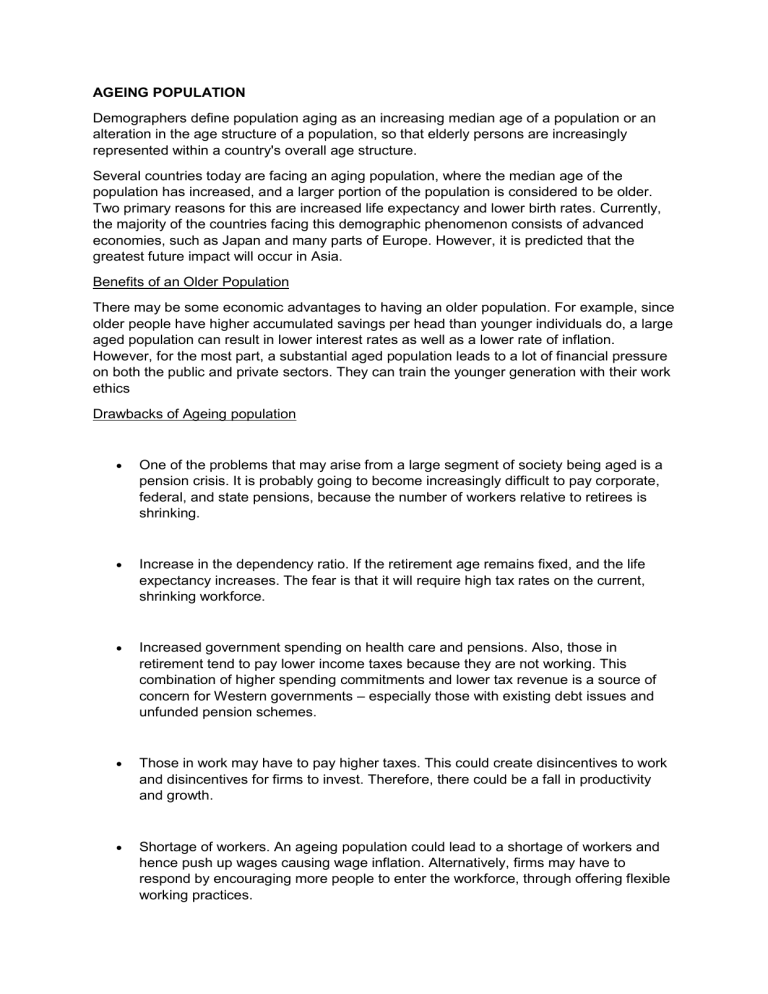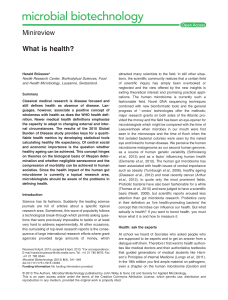
AGEING POPULATION Demographers define population aging as an increasing median age of a population or an alteration in the age structure of a population, so that elderly persons are increasingly represented within a country's overall age structure. Several countries today are facing an aging population, where the median age of the population has increased, and a larger portion of the population is considered to be older. Two primary reasons for this are increased life expectancy and lower birth rates. Currently, the majority of the countries facing this demographic phenomenon consists of advanced economies, such as Japan and many parts of Europe. However, it is predicted that the greatest future impact will occur in Asia. Benefits of an Older Population There may be some economic advantages to having an older population. For example, since older people have higher accumulated savings per head than younger individuals do, a large aged population can result in lower interest rates as well as a lower rate of inflation. However, for the most part, a substantial aged population leads to a lot of financial pressure on both the public and private sectors. They can train the younger generation with their work ethics Drawbacks of Ageing population One of the problems that may arise from a large segment of society being aged is a pension crisis. It is probably going to become increasingly difficult to pay corporate, federal, and state pensions, because the number of workers relative to retirees is shrinking. Increase in the dependency ratio. If the retirement age remains fixed, and the life expectancy increases. The fear is that it will require high tax rates on the current, shrinking workforce. Increased government spending on health care and pensions. Also, those in retirement tend to pay lower income taxes because they are not working. This combination of higher spending commitments and lower tax revenue is a source of concern for Western governments – especially those with existing debt issues and unfunded pension schemes. Those in work may have to pay higher taxes. This could create disincentives to work and disincentives for firms to invest. Therefore, there could be a fall in productivity and growth. Shortage of workers. An ageing population could lead to a shortage of workers and hence push up wages causing wage inflation. Alternatively, firms may have to respond by encouraging more people to enter the workforce, through offering flexible working practices. Changing sectors within the economy. An increase in the numbers of retired people will create a bigger market for goods and services linked to older people (e.g. retirement homes) Higher savings for pensions may reduce capital investment. If society is putting a higher % of income into pension funds, it could reduce the amount of savings available for more productive investment, leading to lower rates of economic growth



